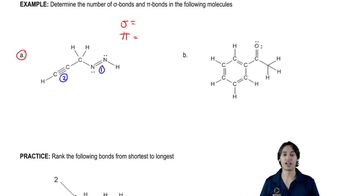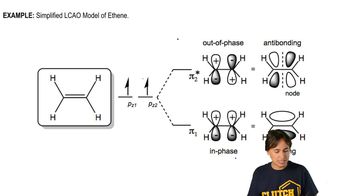Multiple Choice
In the context of molecular interactions, what type of bond is typically broken when mRNA separates from the DNA template during transcription?
 Verified step by step guidance
Verified step by step guidance Verified video answer for a similar problem:
Verified video answer for a similar problem:



 6:00m
6:00mMaster Single bonds, double bonds, and triple bonds. with a bite sized video explanation from Johnny
Start learning